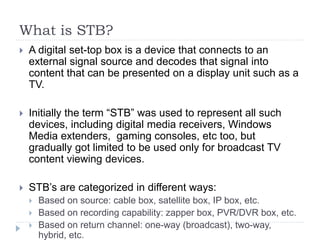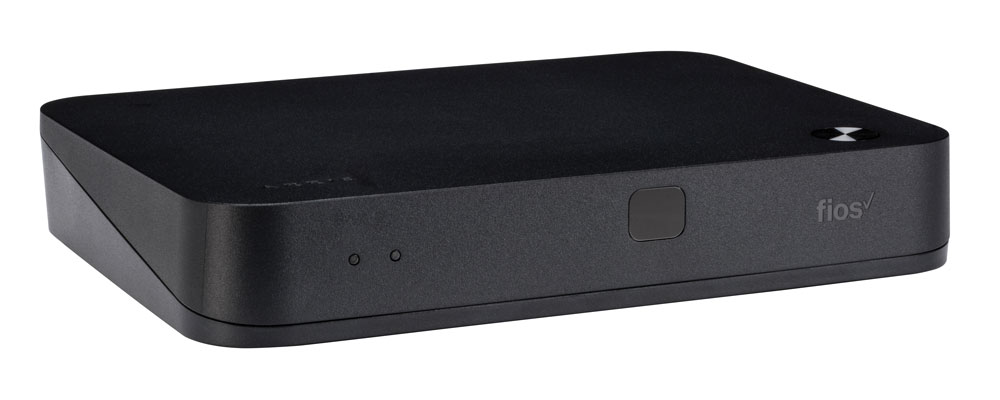


The box allowed an analog non-cable-ready television set to receive analog encrypted cable channels and was a prototype topology for later date digital encryption devices.
#What is a stb tv#
Before cable-ready TV sets became common in the late 1980s, an electronic tuning device called a cable converter box was needed to receive the additional analog cable TV channels and transpose or convert the selected channel to analog radio frequency (RF) for viewing on a regular TV set on a single channel, usually VHF channel 3 or 4.

These frequencies corresponded to non-television services (such as two-way radio) over-the-air and were therefore not on standard TV receivers. Adding any additional channels therefore needed to be done by inserting the extra signals into cable systems on nonstandard frequencies, typically either below VHF channel 7 (midband) or directly above VHF channel 13 (superband).
#What is a stb full#
However, most cable systems could not accommodate the full 54-890 MHz VHF/UHF frequency range and the twelve channels of VHF space were quickly exhausted on most systems. As some 1960s-era 12-channel TV sets remained in use for many years, and Canada and Mexico were slower than the US to require UHF tuners to be factory-installed in new TVs, a market for these converters continued to exist for much of the 1970s.Ĭable television represented a possible alternative to deployment of UHF converters as broadcasts could be frequency-shifted to VHF channels at the cable head-end instead of the final viewing location. Set-top boxes can also enhance source signal quality.īefore the All-Channel Receiver Act of 1962 required US television receivers to be able to tune the entire VHF and UHF range (which in North America was NTSC-M channels 2 through 83 on 54 to 890 MHz), a set-top box known as a UHF converter would be installed at the receiver to shift a portion of the UHF-TV spectrum onto low-VHF channels for viewing. Satellite and microwave-based services also require specific external receiver hardware, so the use of set-top boxes of various formats has never completely disappeared. Content, in this context, could mean any or all of video, audio, Internet web pages, interactive video games, or other possibilities. The signal source might be an Ethernet cable, a satellite dish, a coaxial cable (see cable television), a telephone line (including DSL connections), broadband over power lines (BPL), or even an ordinary VHF or UHF antenna. A consumer Palcom DSL-350 satellite-receiver the IF demodulation tuner is on the bottom left, and a Fujitsu MPEG decoder CPU is in the center of the board.


 0 kommentar(er)
0 kommentar(er)
